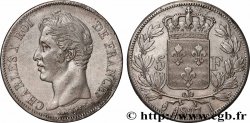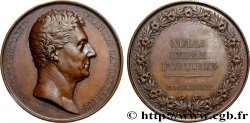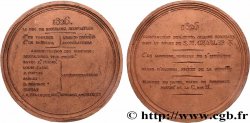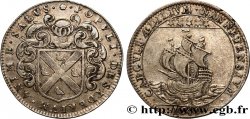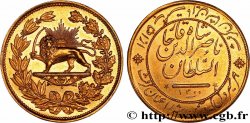Live auction - fme_895919 - KARL X Médaille, Conseil d’État, Joseph Jérôme, comte Siméon
Sie müssen angeschlossen sein und von cgb.fr genehmigt werden, um in einer E-Auktion teilzunehmen.Melden Sie sich an, um zu wetten..Die Kontobestätigungen sind innerhalb von 48 Stunden nach Ihrer Anmeldung gemacht.Warten Sie nicht bis die letzten zwei Tage vor dem Abschluss eines Verkaufs, um Ihre Registrierung abzuschließen. Klickend "BIETEN" verpflichten Sie sich vertraglich, diesen Artikel zu kaufen und Sie nehmen ohne Reserve die allgemeinen Verkaufsbedingungen für den live auctions zu cgb.fr an.
Der Verkauf wird an der Zeit auf der Übersichtsseite angezeigt geschlossen werden. Angebote, die nach der Schließung Zeit empfangen sind, werden nicht gültig.
Bitte beachten Sie, dass die Fristen für die Einreichung Ihres Angebots auf unsere Server können variieren und es kann zur Ablehnung Ihres Angebots entstehen, wenn es in den letzten Sekunden des Verkaufs gesendet wird. Die Angebote sollen mit ganzer Zahl ausgeführt sein, Sie können Kommas oder des Punktes in Ihrem Angebot nicht erfassen. Bei Fragen klicken Sie hier, um einen Blick auf die FAQ Live-Auktionen.
Alle Gewinngebote unterliegen einem Aufschlag von 18 % für Verkaufskosten.
Alle Gewinngebote unterliegen einem Aufschlag von 18 % für Verkaufskosten.
| Schätzung : | 200 € |
| Preis : | 450 € |
| Höchstgebot : | 450 € |
| Verkaufsende : | 13 Februar 2024 17:01:11 |
| Bieter : | 4 Bieter |
Type : Médaille, Conseil d’État, Joseph Jérôme, comte Siméon
Datum: n.d.
Metall : Silber
Durchmesser : 41 mm
Stempelstellung : 12 h.
Graveur MICHAUT Auguste-François (1786-1879)
Gewicht : 41,47 g.
Rand lisse
Punze : sans poinçon
Kommentare zum Erhaltungszustand:
Patine hétérogène, présentant des frottements dans les champs. Présence de quelques rayures. Beaux reliefs au revers. Quelques petits coups sur la tranche
Vorderseite
Titulatur der Vorderseite CHARLES X - ROI DE FRANCE..
Beschreibung Vorderseite Tête nue de profil à droite, signé : MICHAUT..
Rückseite
Titulatur der Rückseite CONSEIL D’ETAT / - / LE BARON / SIMEON.
Beschreibung Rückseite Légende en 3 lignes dans une couronne de chêne, sommée d’une couronne. Signé : BARRE.
Kommentare
La médaille a été remise à Joseph Jérôme, comte Siméon (1749-1842). Né à Aix-en-Provence, il deviendra professeur de droit à l’université d’Aix-en-Provence en 1778, assesseur de Provence en 1783, il perd sa chaire sous la Révolution et prend part au mouvement fédéraliste du Midi en 1793.
D’abord réfugié en Italie, puis de retour à Marseille, il sera député au Conseil des Cinq-Cents en 1795. Condamné à la déportation puis prisonnier, il sera libéré lors du coup d'État du 18 brumaire. Refusant sa nomination de préfet de la Marne, il sera nommé tribun et prend part à la préparation du Code civil. Conseiller d'État (1804), il devient membre du conseil de régence en 1807 puis ministre de l'Intérieur et président du Conseil d'État du roi Jérôme de Westphalie.
Il sera ensuite préfet du Nord (1814-1815), il siège aussi à le Chambre des représentants des Cent-Jours, puis à la « Chambre introuvable » à la Seconde Restauration et reprend place au Conseil d’État en 1815. Il sera également ministre de l’Intérieur (1820-1821), pair de France à partir de 1821 et sera le premier président de la Cour des comptes (1837-1839).
The medal was awarded to Joseph Jérôme, Count Siméon (1749-1842). Born in Aix-en-Provence, he became a professor of law at the University of Aix-en-Provence in 1778, assessor of Provence in 1783, he lost his chair during the Revolution and took part in the federalist movement of the South in 1793. First a refugee in Italy, then returning to Marseille, he was a deputy in the Council of Five Hundred in 1795. Sentenced to deportation then prisoner, he was freed during the coup d'état of 18 Brumaire. Refusing his appointment as prefect of the Marne, he was appointed tribune and took part in the preparation of the Civil Code. Councilor of State (1804), he became a member of the Regency Council in 1807 then Minister of the Interior and President of the Council of State of King Jerome of Westphalia. He was then Prefect of the North (1814-1815), he also sat in the Chamber of Representatives of the Hundred Days, then in the \\\"Introuvable Chamber\\\" during the Second Restoration and took his place again in the Council of State in 1815. He was also Minister of the Interior (1820-1821), Peer of France from 1821 and was the first President of the Court of Auditors (1837-1839)
D’abord réfugié en Italie, puis de retour à Marseille, il sera député au Conseil des Cinq-Cents en 1795. Condamné à la déportation puis prisonnier, il sera libéré lors du coup d'État du 18 brumaire. Refusant sa nomination de préfet de la Marne, il sera nommé tribun et prend part à la préparation du Code civil. Conseiller d'État (1804), il devient membre du conseil de régence en 1807 puis ministre de l'Intérieur et président du Conseil d'État du roi Jérôme de Westphalie.
Il sera ensuite préfet du Nord (1814-1815), il siège aussi à le Chambre des représentants des Cent-Jours, puis à la « Chambre introuvable » à la Seconde Restauration et reprend place au Conseil d’État en 1815. Il sera également ministre de l’Intérieur (1820-1821), pair de France à partir de 1821 et sera le premier président de la Cour des comptes (1837-1839).
The medal was awarded to Joseph Jérôme, Count Siméon (1749-1842). Born in Aix-en-Provence, he became a professor of law at the University of Aix-en-Provence in 1778, assessor of Provence in 1783, he lost his chair during the Revolution and took part in the federalist movement of the South in 1793. First a refugee in Italy, then returning to Marseille, he was a deputy in the Council of Five Hundred in 1795. Sentenced to deportation then prisoner, he was freed during the coup d'état of 18 Brumaire. Refusing his appointment as prefect of the Marne, he was appointed tribune and took part in the preparation of the Civil Code. Councilor of State (1804), he became a member of the Regency Council in 1807 then Minister of the Interior and President of the Council of State of King Jerome of Westphalia. He was then Prefect of the North (1814-1815), he also sat in the Chamber of Representatives of the Hundred Days, then in the \\\"Introuvable Chamber\\\" during the Second Restoration and took his place again in the Council of State in 1815. He was also Minister of the Interior (1820-1821), Peer of France from 1821 and was the first President of the Court of Auditors (1837-1839)







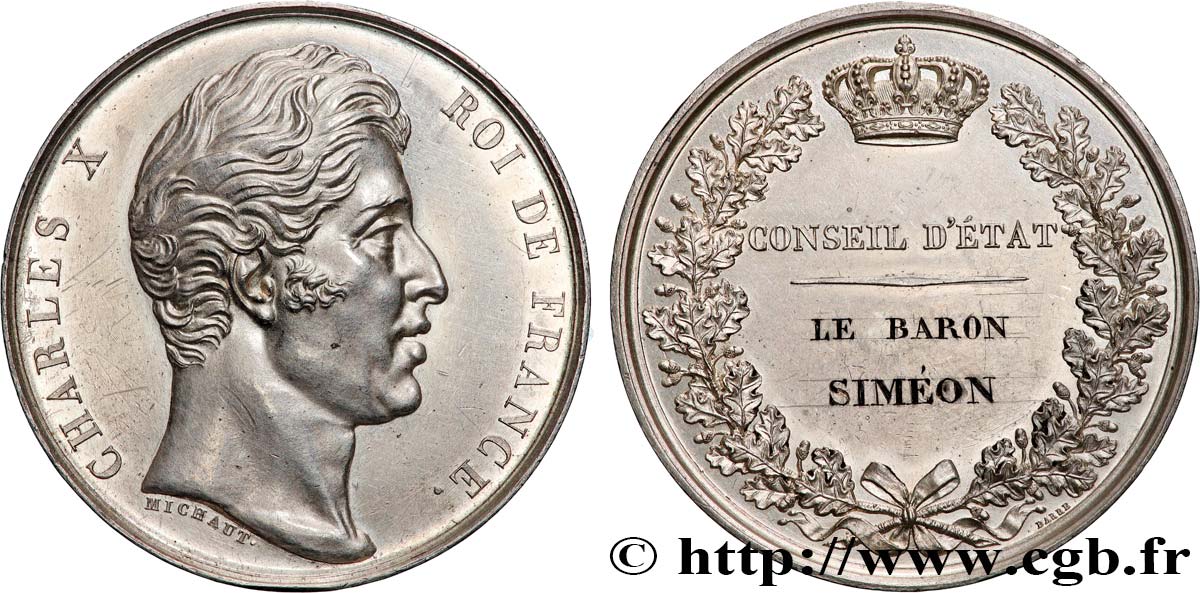
 Berichten über einen Fehler
Berichten über einen Fehler Die Seite drucken
Die Seite drucken Teilen meiner Auswahl
Teilen meiner Auswahl Stellen Sie eine Frage
Stellen Sie eine Frage Einlieferung/Verkauf
Einlieferung/Verkauf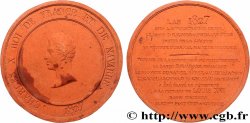
 Details
Details
